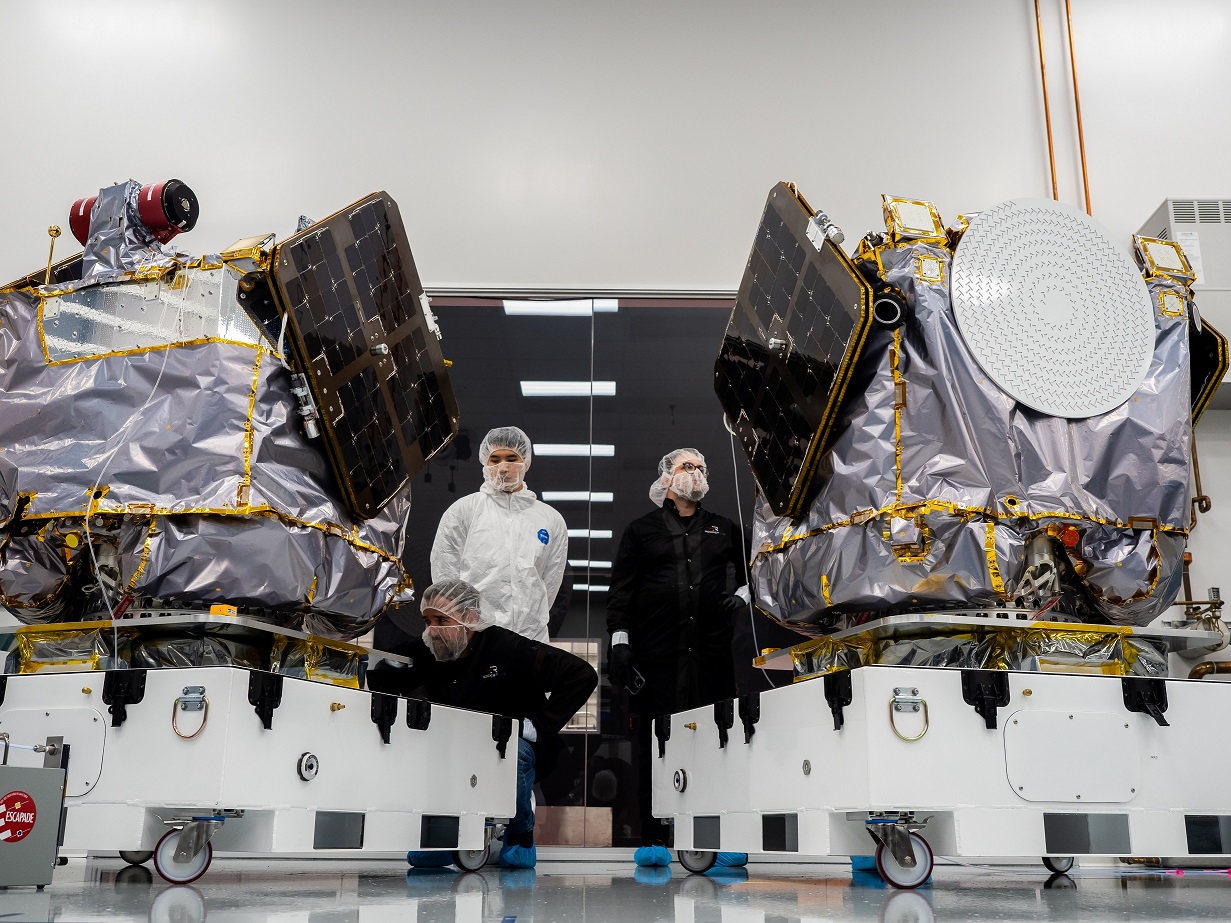ESCAPADE, short for Escape and Plasma Acceleration and Dynamics Explorers, was developed and launched on a budget of about $80 million, a bargain compared to all of NASA’s recent Mars missions. The spacecraft was built by Rocket Lab, and the project is managed by the University of California, Berkeley on behalf of NASA.

Two spacecraft for NASA’s ESCAPADE mission at Rocket Lab’s factory in Long Beach, California.
Credit: Rocket Lab
NASA paid Blue Origin about $20 million to launch ESCAPADE, significantly less than the cost of launching it on any other dedicated rocket. The space agency acknowledged the risks of launching on the relatively untested New Glenn rocket, which has not yet been certified by NASA or the Space Force for major government space missions.
The mission was scheduled to launch last year, when conditions were right to enable direct travel between Earth and Mars. But Blue Origin delayed the launch, forcing a year-long wait until the company’s second New Glenn was ready to fly. Now, the ESCAPADE satellites, each weighing about half a ton, fully fueled, will hover in a unique orbit more than a million miles above Earth until next November, when they head for the Red Planet. ESCAPADE will arrive at Mars in September 2027 and begin its science mission in 2028.
Rocket Lab ground controllers established communications with the ESCAPADE satellites late Thursday.
“The ESCAPADE mission is part of our strategy to understand Mars’ past and present so we can safely send the first astronauts there,” said Nikki Fox, associate administrator for NASA’s Science Mission Directorate. “Understanding Mars space weather is a top priority for future missions because it helps us protect systems, robots, and most importantly, humans in extreme environments.”
